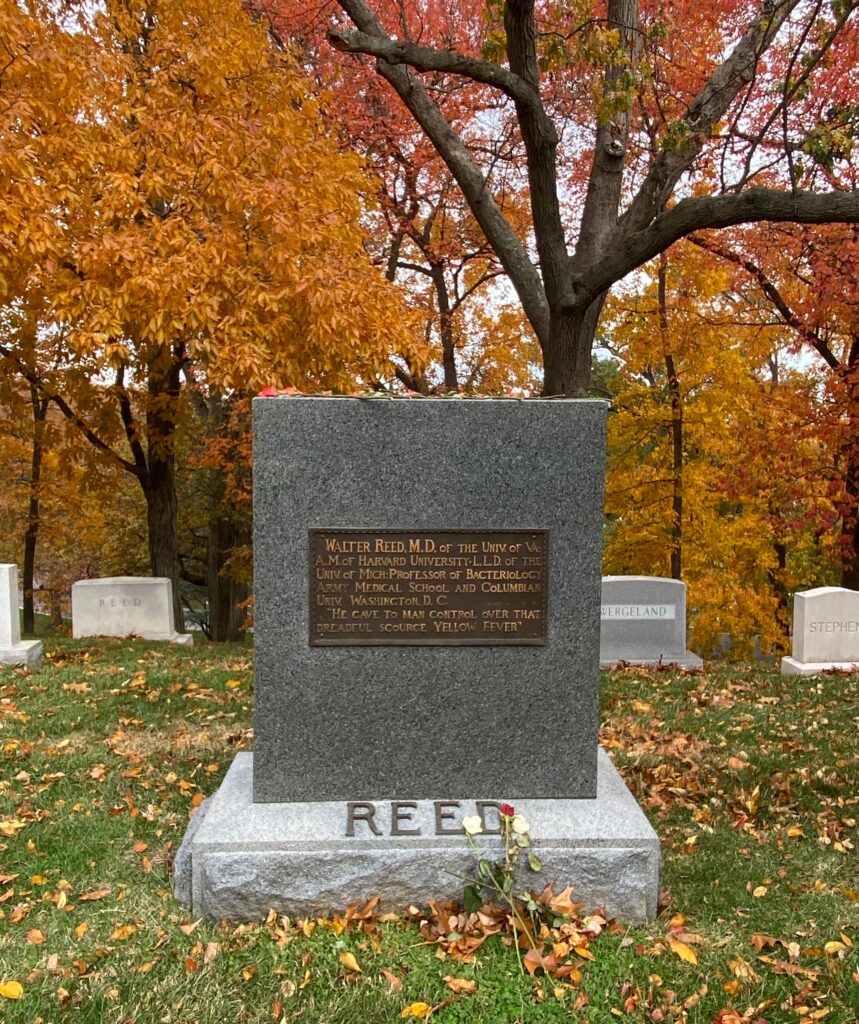Erik Visits an American Grave, Part 295
This is the grave of Walter Reed.
Born in 1851 in Belroi, Virginia to a traveling Methodist minister, Reed largely grew up with his mother’s family in North Carolina since his father was on the road all the time. Something of a prodigy, he went to college at the University of Virginia and graduated with a medical degree in 1869, only 18 years old. In the colonial era, people did go to college as young teenagers, but this was already uncommon by the mid-19th century and Reed is the youngest person to ever graduated with that degree from the school. But the University of Virginia’s doctor program wasn’t the top in the nation, so in 1870, he enrolled for a 2nd M.D. at Bellevue Hospital Medical College in New York, interned at a few hospitals, and then worked at the New York Board of Health until 1875.
But Reed was frustrated. He didn’t much care for New York and found that people didn’t take him seriously because he was so young. So he joined the U.S. Army Medical Corps in 1875. He stayed there until 1891, working largely in the West and quite often in Native American communities where disease was eradicating much of the remaining part of the population. He found the disease epidemics horrifying and also believed that bad sanitation, which was epidemic in the U.S. in the 19th century, was a major problem. He managed to do coursework at Johns Hopkins in advanced pathology and bacteriology toward the end of his tours and became more of an expert on these issues.
In 1893, Reed became a professor of medicine at the George Washington University School of Medicine and the Army Medical School. This allowed him time to research and it was here that he became famous. He started doing work on yellow fever, still a major problem in the U.S. in the late 1890s. Long believed to be epidemic in the Washington area from people drinking out of the Potomac, Reed showed in 1896 that in fact, officers who got yellow fever commonly took evening walks on the river while officers who did not get it usually never walked there. This began to narrow down the causes of the disease. When the U.S. invaded Cuba in 1898, Reed went to investigate disease there, which was much more deadly to American troops than Spanish bullets. Typhoid was a huge problem and he and his colleagues demonstrated the connection between fecal-contaminated food and water and the disease and showed that flies were the vector spreading it. This was the period when medicine was finally advancing past its medieval stage, largely because of Pasteur’s germ theory. Reed was certainly on board with this and when he returned to Cuba in 1900, he engaged in large-scale, albeit risky experiments, with control groups to determine for sure that it was mosquitoes that caused yellow fever. In fact, some of the medical personnel allowed themselves to be infected. Pretty brave stuff. This critical research, which helped eliminate yellow fever in much of the world, was a huge advance in medicine. Reed himself didn’t take much credit, noting that he was building on the work of others and that he had many colleagues who also deserved credit. But within a year, he had received honorary degrees from Harvard and the University of Michigan. He was the America’s most famous doctor and seen as a hero by many.
Alas, Reed’s appendix burst in 1902 and he died. He was only 51 years old. His wife lived another 48 years.
Walter Reed is buried on the confiscated plantation of the traitor Lee, Arlington National Cemetery, Arlington, Virginia.
If you would like this series to visit other famous doctors in American history, you can donate to cover the required expenses here. Benjamin Rush is in Philadelphia and Helen Brooke Taussig, the pioneering cardiologist, is in Cambridge. Previous posts in this series are archived here.



